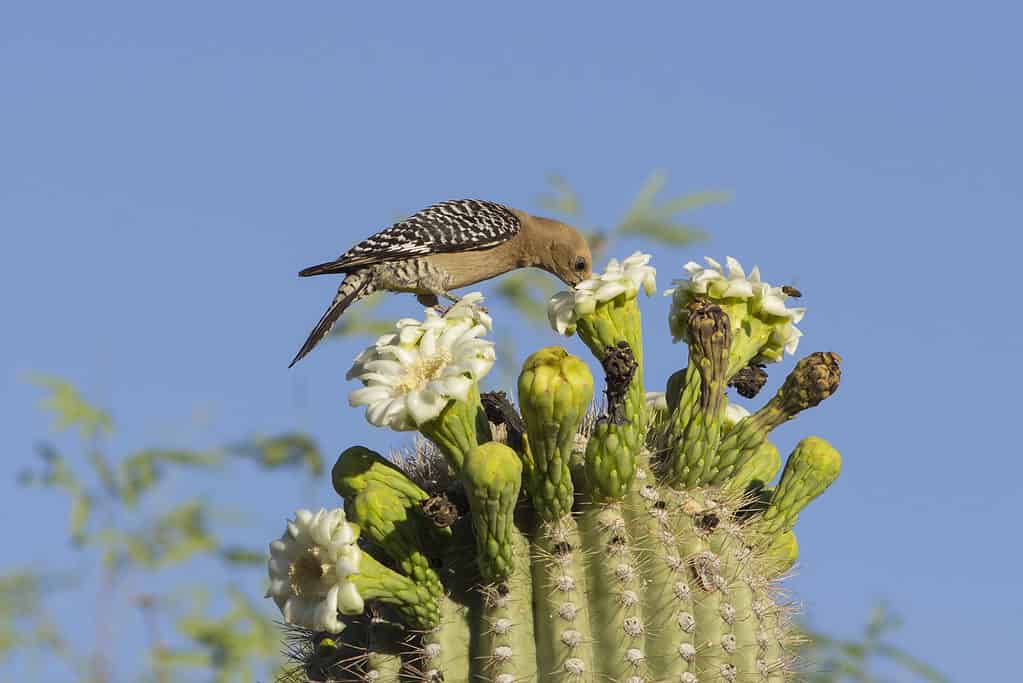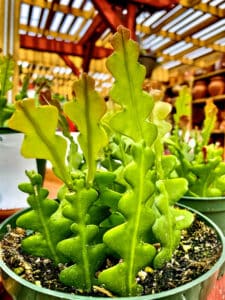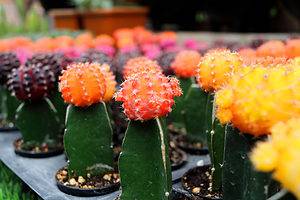Every passerby will undoubtedly notice the saguaro cactus wherever they grow. With their unusual and gorgeous blossoms, huge bodies, and unique appearance, they enchant the areas in which they grow.
Saguaro cacti resemble swords or spears embedded in the earth, and these Cactaceae family members are a pleasure to behold up close. These cacti are indigenous to the Sonoran Desert in Arizona, although they can also flourish in California’s Imperial County and the Whipple Mountains, as well as the Mexican state of Sonora.
The Saguaro cactus is the biggest and most unusual cactus in North America. There are several applications for these helpful giants as well. Native Americans have long utilized the saguaro’s wooden ribs as receptacles for food and drink. Their woody ribs can also be used to make furniture, fences, and roofs.
Saguaro cacti are crucial to the ecosystem of the desert because they provide bird nesting sites and a source of food for many different animal species. They also offer copious amounts of fruit, nectar, and pollen to the ecosystems they grow in.
So, is it possible to grow a saguaro cactus on one’s own? Maybe you’ve been gifted a grown saguaro, or you’ve moved to a property that already has one established. Whether you want to grow your own saguaro cactus or just want to learn more about this unique and otherworldly plant, we’ve got you covered. Read on to learn everything you need to know about the saguaro cactus!
What is a Saguaro Cactus?
The saguaro cactus is classified as Carnegiea gigantea. It is a cactus that is part of the genus Carnegiea and a member of the Cactaceae plant family. This makes the saguaro cactus a close relative of cacti like the rose cactus, lime cactus, Sonora barrel, and many other cacti.
The saguaro cactus is a species of tree-like cactus that can reach heights of more than 40 feet. Saguaros typically live more than 150 years, which is a remarkably lengthy lifetime for a plant.

Saguaro cacti (pictured) can live to be over 150 years old in undisturbed desert areas such as the Sonoran desert.
©LHBLLC/Shutterstock.com
Saguaro Cactus Anatomy
The saguaro is a species of columnar cactus with distinctive branches that are sometimes referred to as arms. Some might never develop any arms, while others might develop their first side arm between the ages of 75 and 100 years old. Saguaro cacti that do not have arms are known as spears. The development of arms boosts the plant’s ability to reproduce since more apices result in more blooms and fruit.
Saguaros have extensive roots that can reach depths of up to 100 feet and lengthy taproots that can reach depths of up to three feet. A saguaro’s spines or “spikes” can grow as long as three inches and grow a millimeter each day during the growing season. They are also extremely sharp.
Alternating bright and dark stripes that run along the long axis of the spines can be seen when the specimen is held up to the light or cut in half. Daily growth has been linked to these bands, which makes them helpful in determining a saguaro cactus’s age. Being as sharp and powerful as steel needles, the spines have the potential to seriously harm both humans and animals.
A saguaro can absorb and store lots of precipitation, visually growing while it does so, and then gradually use the stored water as needed. Due to this trait, saguaro cacti can endure dry spells that are common in the Sonoran desert. It is a keystone species that supports several other species by serving as their food source and habitat.
The saguaro cacti’s pace of growth is highly dependent on precipitation; those in western Arizona, which is dryer, grow about half as quickly as those in and around Tucson. Saguaros grow slowly from seed. After two years, they are often barely an inch tall.
Saguaro Cactus Origin and Native Environment
The saguaro cactus is indigenous to the Whipple Mountains and Imperial County regions of California, the Sonoran Desert in Arizona, and the Mexican state of Sonora. Just 30 native plants are known to exist in southeastern California. Being vulnerable to prolonged frost or extremely low temperatures, the saguaro’s habitat is constrained by elevation.
This plant is quite prevalent in Arizona, and its blossom is the recognized official wildflower of the state. The waxy, white flowers of the saguaro bloom from April to June, opening long after dusk and shutting in the middle of the day. After daylight, they continue to generate nectar. Saguaro National Park, which is close to Tucson, Arizona, was established in 1994 to aid in the protection of this species and its ecosystem.
For thousands of years, saguaros have provided humanity with food and shelter. Native Americans, like the Pima people, make syrup from the cacti’s luscious, red-fleshed fruits. In the wood-scarce deserts, their ribs are employed as construction materials. Being a keystone species, the saguaro offers hundreds of other species with food, shelter, and safety. A sizable number of species are supported by the saguaro from the time it is a seedling until it dies of old age.
Colors of the Saguaro Cactus
Saguaro cacti, like many cacti, have medium-green bodies, though the shades of green can vary from plant to plant. Some plants, especially during periods of dehydration or old age, can have a blue-green hue to their bodies. Their spines tend to be creamy white or very pale green.
The enormous saguaro cactus produces one of the most exquisite blooms every spring. The nighttime blooming of the huge, white flowers with golden centers is followed the next day by their closure. When first grown, they have a green hue before turning into white petals. Birds, insects, and even bats pollinate them in the wild.
Saguaro cacti also produce fruit that is green at first before turning bright, vibrant red. The pulp of the fruit is also red, and each fruit contains hundreds of black seeds.

Lots of creatures, such as the Gila woodpecker and various bee species (pictured) pollinate the saguaro cactus.
©iStock.com/tntphototravis
When Will My Saguaro Cactus Bloom?
When saguaros reach a height of about six or seven feet, or when they are between 30 and 65 years old, they attain reproductive maturity and produce their first blooms. The latter two weeks of April are when saguaro flowering starts, and the last week of May through the first week of June is when it reaches its height. In order to precisely anticipate when your saguaro will bloom, you will need to determine its age if at all possible.
Winter rain, longer days, and higher temperatures in the spring all contribute to the saguaro’s blooming. Late June or early July is usually when the fruit becomes a rich crimson hue. In anticipation of the summer rains in July and August, they scatter countless numbers of tiny black seeds.
How to Encourage a Saguaro to Bloom
So how might one aid in the saguaro’s blooming process? Unfortunately, in most cases, you’ll just have to be patient and hope your saguaro will bloom in your lifetime. However, there are a few different things you can do to create the right environment for your cactus to bloom.
To bloom, cacti need to become dormant. As the temperature falls below 59 degrees F, the resting period typically lasts between two and four months. Withhold water and fertilizer during this period and ensure the cactus is in a cool location with lots of direct light.
If your saguaro is in a pot, keep the cactus in a sunny area where it will receive lots of sunlight. If it’s too dimly lit indoors, utilize artificial light as most cacti require at least five hours of intense, direct sunlight to thrive. Lack of light will cause saguaro plants to etiolate or turn pale and, most likely, prevent them from blooming.
This cactus doesn’t like to be transplanted often, so try not to do it too often or at all. Instead, start by preparing a very large pot when you first receive your saguaro. Don’t water the cactus right away if you do need to transfer it to a new pot. This can hinder its capacity to develop and subsequently blossom.
How to Grow a Saguaro Cactus
Saguaro cacti can be grown both indoors and outside. Regardless of where it is located, it typically takes them 20 to 50 years to grow just three feet or so tall. They are incredibly easy to grow and maintain (in Arizona, at least) because they don’t need a lot of attention, which is a popular feature of houseplant cacti.

Saguaro National Park (pictured) provides the perfect habitat for saguaro cacti to grow and thrive.
©Nate Hovee/Shutterstock.com
Repotting and Transplanting a Saguaro Cactus
The roots of the saguaro cacti are distinct from those of other cacti. The conspicuous tap root of saguaro cactus must be clipped if you wish to repot or transplant them. If you are careful and have someone help you when the cactus is older and well-established, it is a rather easy task. However, as mentioned earlier in this guide, you should not do this more than a few times or at all during its lifetime.
To find your saguaro’s roots, you should dig around the cactus at a distance of around one foot. Be careful to trim the roots at the bottom of the hole you excavated, preserving the majority of them. Gently remove the cactus and prune any unhealthy areas with a pair of fine pruning shears. You must let the roots dry for a few days prior to repotting. As long as the temperature is above 60 degrees F, nighttime is the best time to transplant these cacti.
Water Needs for a Saguaro Cactus
Saguaros can withstand prolonged droughts because, like other cacti, they store a lot of water in their bodies to use during dry spells. When given enough water, however, this species will grow and eventually blossom considerably more effectively. So, by attending to your cactus’s watering needs, you can easily fulfill your goal of having it produce some lovely flowers.
These cacti require regular watering from late March through September when they are in their growing season. You can water them once or twice a month when they are dormant, though they might not need water at all. The temperatures in which your cacti are developing directly affect how often you should water them.
Always examine the soil before the next watering, regardless of the season or climate conditions your cactus encounters. It is advised to let the soil gradually dry up before giving the plant more water.
Soil and Fertilizer Needs for a Saguaro Cactus
Being a desert cactus, this species tends to thrive in loamy, neutral soil that drains well. Put your saguaro cactus in a potting mixture designed specifically for cacti and succulents, or give an all-purpose potting soil a little more grit with sand. A top layer of stones or gravel can also be added for optimum development. This will lower the soil’s moisture content and support the cactus as it becomes taller.
Saguaro cacti don’t require regular fertilization. However, you can feed your cactus once a year in the spring. Cactus food can enable these cacti to finish their growth cycle, therefore fertilizing it will give your plant a better chance of blooming. During the growing season, you can use a mild liquid fertilizer once every two to three weeks to promote growth. Just make sure the product you use is designed for cacti.
Sunlight Conditions for a Saguaro Cactus
While they can tolerate intense and harsh sunlight, prolonged exposure to it can cause them to become burned. They occasionally need a break, though they need at least five hours of bright, direct, or full sunlight. When growing saguaro cacti outdoors, place the seeds in a location where they will always have access to bright, direct light. They can also thrive in a heated greenhouse. Choose a location in front of west-facing or south-facing windows if you wish to grow them indoors.
Temperature and Humidity Needs for a Saguaro Cactus
Saguaro cacti can only survive in warm climates; they cannot withstand frost whatsoever. Make sure you move potted saguaro indoors in the early fall since they do not like temperatures below 60 degrees F. These cacti will survive quite well in typical room temperatures during the winter. In general, the best temperature for saguaro cacti is between 60 and 90 degrees F.
Saguaro cacti prefer hot and dry climates. Thus, they don’t need any particular humidity levels to thrive. If you live in a place with dry air, your saguaro should be fine.
Pests to Watch Out For
Mealybugs and scale insects are the two pests that might harm your saguaro cactus, though they are rarely a major problem. These are very resilient cacti! If an infestation does occur, you must isolate your cactus and gently wipe it with a cotton cloth dipped in rubbing alcohol if you see any indications of either insect. Also, you can avoid these pests by routinely utilizing organic insecticides or pesticides.
Is It Hard to Grow a Saguaro Cactus?
If you happen to live in southern Arizona, where these beautiful cacti are native, growing one is actually quite easy. That being said, it is almost impossible to grow this cactus outside of USDA hardiness zones nine through 10. Even then, creating the right conditions for this cactus is difficult to do, unfortunately.
Aren’t saguaro cacti just absolutely amazing? These stunning plants almost seem like they belong on another planet, and there are few other plants that are quite as large and strange-looking as them. As a beloved and protected species, it is difficult to find them growing outside of the southwest in the wild. It can also be difficult to find them as potted plants or as seeds unless you want to take the risk of buying them online via specialty nurseries and shops. But if you get a chance, you can behold massive fields of these ancient cacti by visiting the Saguaro National Park in Tucson, Arizona.
The photo featured at the top of this post is © iStock.com/Nate Hovee
Thank you for reading! Have some feedback for us? Contact the AZ Animals editorial team.







